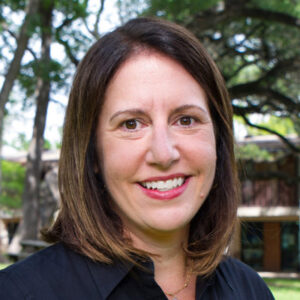By: Dr. Claire Miller Colombo
We’re a people of the Word. How do we enact Beloved Community in the language we use?
Tucked away in the “Additional Policies” section of all Southwest student syllabi can be found the seminary’s Inclusive and Expansive Language policy. If you are a non-student member of the community or a pre-2019 alum, you may not be aware this policy exists. As we live deeper into our call as Beloved Community, however, I thought it might be a good idea to raise it up for all to reflect upon. Here it is:
In response to Jesus’ call to love our neighbors, and as an expression of our Conversation Covenant and Core Values, the seminary strives to welcome the full range of human voices and experiences in the classroom and in writing. Therefore, students are expected to:
- Use language that invites a diverse audience to identify with our stories, examples, and arguments.
- Avoid language that reinforces exclusive or biased assumptions.
- Refer to others using language they have identified as true to who they are.
- Seek fully gender-inclusive language, paying particular attention to our use of collective nouns and singular pronouns — e.g., avoiding using man and he as generic references to humanity, avoiding simple binary solutions (as in he/she), and affirming the use of they as a singular pronoun.
Students are encouraged to use language for God that indicates that God transcends gender and can be experienced in various ways.
While designed to contribute to the formation of students as ministers and caregivers — to invite them to practice using language that heals rather than hurts — these guidelines are a good starting point for any of us who aspire to use language lovingly, to communicate nonviolently, through our daily written and spoken words. (Even email shorthand can be received as less than loving!)
Chances are, most of us use language mindlessly most of the time. And even when we use it consciously — for, say, a presentation or a meeting report — most of us think of it in a particularly utilitarian way. There is in the West a dominant understanding of communication as an outward-facing and transactional act: We have an idea or a thought (the commodity), and we seek to “send” it into the world so that others (the consumers) can “receive” it.
Anyone whose mood or mojo has ever been disturbed by the words of another person, though — which would be all of us — knows in their bones that communication doesn’t work like this. And those of us who belong to a tradition in which the procession of the Second Person from the First is figured as the Word made flesh know especially acutely how visceral communication is. We know what’s at stake in an utterance, what vulnerabilities it involves, and what dead zones it can renew and redeem.
Even the authors of communication theory textbooks know this. While acknowledging communication is rooted in a thought or idea that wants to pass outward from the mind, they also acknowledge that communication is, finally, relational, “not only because it takes place between two or more persons,” reads one textbook, “but also because it affects the nature of the connections among those people.” [my italics]. Anticipating the next question — “How so?” — our textbook theorists are pressed to admit the mystery at the heart of the thing. “Much like a river,” they go on, “communication is always in flux, never completely the same, and can only be described with reference to what went before and what is yet to come.” Evocative language, all of this, coming from the so-called secular world of communication theory!
Practitioners of nonviolent communication (NVC) have long been aware of what the textbook authors struggle to express in clinical language. As a movement, NVC grew up alongside American Buddhism in the 1960s and significantly influenced Dr. Martin Luther King, Jr.’s advocacy of nonviolence as the pathway to Beloved Community. (One of King’s most influential advisors was the Vietnamese monk and teacher Thich Nhat Hanh.) Rooted in deep listening, the aim of NVC is to hear and express our own most fundamental needs and those of others — needs that arise out of material conditions and call for fulfillment through action. The founder of the NVC movement, Marshall Rosenberg, points out that the method is based on all that “has been known for centuries about consciousness, language, communication skills, and use of power that enable us to maintain a perspective of empathy for ourselves and others, even under trying conditions.”
Communication, in other words, is the first cousin of both community and communion. (All three words stem from the Latin communis, made up of com-, “bringing together,” and munus, “duty or obligation.”) When we communicate — which can also mean to give or receive communion — we perform a sacred and relational duty. We embody and shape the relationships out of which we arise, and we do so “only in reference to what went before and what is yet to come.” We speak not just abstract ideas that have been packaged or commodified in words; we speak out of bodies that have experienced and been shaped by reality in certain ways, to bodies that have experienced and been shaped by reality in certain ways — to bodies that have needs that will be either served or exacerbated by the words we say. Our words and our flesh are implicated, braided together. They move and flow in community. And they happen at the table of common life.
Which brings us back to the Southwest language policy. As members of a learning community, our use of actual language — words and phrases — but also our curation of and exposure to texts, perspectives, genres, and the almost limitless ways in which humans use their voices (including, as Barbara A. Holmes reminds us in Joy Unspeakable, both the moan and the lament), can welcome or exclude. It can lay a place setting or it can snatch one up. It can beckon a guest forward or it can bar the door. “If I make it to the table of God,” writes the creator of Black Liturgies and author of This Here Flesh, Cole Arthur Riley, using language that indeed beckons, “I hope it has cornbread stuffing and comfortable chairs. I hope God knows how my cousin’s baked mac and cheese tastes. I hope he puts ham hocks in his greens and feels no shame.”
Holding a “hope” that members of this community would use language hospitably and sacramentally — as an act of Beloved Community — is different, however, from requiring such a use. As he is prone to do, Dr. Steven Tomlinson suggested to the group authoring the policy a useful way to reframe this conundrum. Rather than regard the “policy” as a requirement to use certain sorts of language, he wondered, why not think of it as an invitation to a gesture of neighbor love? Rather than reinforce an understanding of communication that presumes the formulation and transaction of disembodied ideas, why not express an understanding of communication that takes for granted our desire to care for one another, as bodies with experiences and needs?
And so we framed our language about language — which I hope remains in flux and continues to evolve as we do — as an invitation to the table of language. “In response to Jesus’ call to love our neighbors,” the policy, the invitation, begins, “the seminary strives to welcome the full range of human voices and experiences in the classroom and in writing.” This range, to my understanding, includes what author and activist bell hooks describes as vernacular voices that at key moments disrupt standard English “in a manner that invites dominant mainstream culture to hear — to listen — and, to some extent, be transformed.” Thanks be to God for these disruptions.
After setting this intention to welcome the full range of voices to our table — to build community rather than convey a commodity — the policy goes on to suggest what this might look like in action.
When we intend to be hospitable, we will …
- “Use language that invites a diverse audience to identify with our stories, examples, and arguments.” We might notice a default figure of speech in our lexicon — such as “Jane Doe” — and take the time to find and use an equivalent from another culture.
- “Avoid language that reinforces exclusive or biased assumptions.” When referring to a person not present, for example, we might consider whether it is necessary to include an aspect of their identity, such as race or social group.
- “Refer to others using language they have identified as true to who they are.” We might notice a woman referring to her spouse as spouse rather than wife, and remember to use that language when referring to her partner in the future.
- “Seek fully gender-inclusive language.” We might be on the lookout for nouns we use that exclude one or more genders, such as chairman or brothers and sisters, and search for more inclusive terms, such as chair or siblings.
- “Use language for God that indicates that God transcends gender.” We might listen for the ways those we serve refer to God — such as “Holy One,” “Spirit,” or “Divine” — and mirror that language in conversation with that person.
Using language to build connection and nurture love is a spiritual practice. It bridges us in to new realities and calls us to be more than we currently are. I am reminded of this every time Valerie Mayo, Southwest’s Director of Beloved Community Initiatives, begins an announcement, sermon, or pubic statement of any sort by addressing us as “Beloveds.” Our Beloved Community is as yet imperfect, but her confidence that we are oriented toward that reality draws all of us closer to it.
In what one, small way might you introduce a conversation about nonviolent, life-giving language in your work or family context?
In what one, small way might you turn an ordinary act of communication into an act of communion?
In what one, small way might you use language that tells someone — maybe one particular person — that you see them?
What non-traditional word or image for God could you experiment with in the coming days?
1 Em Griffin, Andrew Ledbetter, and Glenn Sparks, A First Look at Communication Theory, 10th edition (McGraw Hill, 2019), p. 8.
2 Ibid.
3 This Here Flesh: Spirituality, Liberation, and the Stories that Make Us (New York: Convergent Books, 2022), p. 60.
4 Teaching to Transgress: Education as the Practice of Freedom (New York: Routledge, 1994), p. 171.
This fall, Sowing Holy Questions focuses on beloved community.




3 Responses
Thank you for this wonderful, thoughtful offering. It gave me many thoughts to ponder and explore. I’ve tried to be inclusive in my dealings with others, but I now see ways to improve. SSW is blessed by your presence on the faculty.
Dr. Colombo, so very well said and it brings to mind the idea that “words matter.” So very often so many forget that. Beautifully written. Thank you.
Deacon Paul Wood
This is lovely, Claire. Thank you!